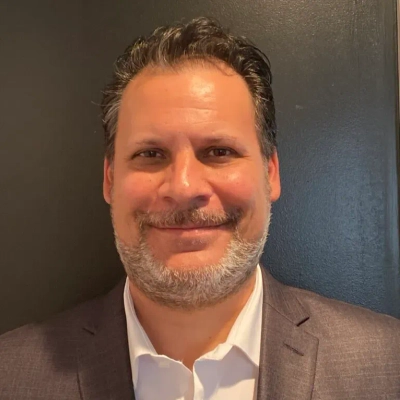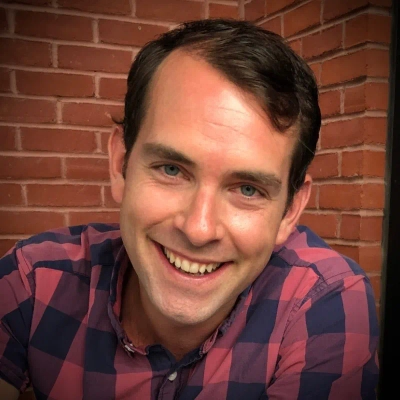25 Ways to Apply Economic Theory to Solve Real Business Problems"
Economic theory isn't just for academics; it has powerful real-world applications in business. This article presents 25 practical ways to leverage economic principles for solving everyday business challenges. Drawing from insights shared by industry experts, these strategies offer a fresh perspective on tackling common issues across various sectors.
- Comparative Advantage Boosts Business Productivity
- Price Elasticity Drives Segmented Pricing Strategy
- Hedging Against Inflation Preserves Client Wealth
- Coase Theorem Simplifies Property Inheritance Issues
- Unit Economics Guide Sustainable Business Growth
- Law of Diminishing Returns Optimizes Marketing
- Value-Based Pricing Transforms Parts Business
- Adverse Selection Principle Aids Note Evaluation
- Geographic Clustering Enhances Service Efficiency
- Regression Analysis Improves Renovation Cost Forecasting
- Perceived Value Anchoring Boosts Customer Retention
- Seasonal Pricing Balances Demand and Staffing
- Opportunity Cost Reshapes Time Management Strategy
- Sunk Cost Concept Guides Investment Decisions
- Efficiency Analysis Revolutionizes Lead Generation Approach
- Price Elasticity Restructures Land Payment Plans
- Economies of Scale Enhance Flipping Operations
- Network Effects Multiply Property Acquisition Opportunities
- Present Value Calculations Demonstrate Cash Offer Benefits
- Behavioral Economics Overcomes Seller Hesitation
- Shared Incentives Align Agent-Investor Interests
- Game Theory Resolves Inherited Property Disputes
- Transparency Mitigates Asymmetric Information Risks
- Supply and Demand Analysis Optimizes Home Pricing
- Diminishing Returns Principle Guides Renovation Decisions
Comparative Advantage Boosts Business Productivity
Applying fancy "economic theory" is not how I run my business. The simple principle that solved a major operational problem for us was Comparative Advantage—the understanding that every person should focus on the task they do best.
The practical business problem was simple: my highly-paid, skilled craftsmen were spending hours every morning driving trucks to the supply yard and waiting in line for materials. We were paying a top roofer's wage for the low-skill task of waiting in traffic, which was killing our margins and causing frustration on the job site.
To solve it, I hired a single, dedicated, lower-wage logistics driver whose job was purely to manage all material pickups and deliveries. This immediately freed up my skilled men to stay on the roof and focus 100% on high-value, quality work. Our productivity per man-hour instantly shot up because we eliminated the high-cost time spent on low-skill tasks.
The key lesson is that money is saved when specialization is enforced. My advice is to stop having highly-paid, skilled workers do low-skill jobs like driving or clean-up. Force everyone in your business to focus on their single most profitable skill, and your margins will increase instantly.
Price Elasticity Drives Segmented Pricing Strategy
In one instance, declining demand and competitive pressure threatened margins. To address this, I applied the concept of price elasticity of demand. I segmented clients by their sensitivity to pricing, identifying which were less likely to respond to price changes and which were more sensitive. For less sensitive clients, we implemented premium pricing; for others, we offered targeted discounts.
Next, we paired this pricing approach with a focus on high-margin services. By concentrating on offerings that contributed most to profit, we avoided spreading resources too thin. We also monitored client response and adjusted prices dynamically, ensuring that revenue and profitability remained balanced.
The results were measurable. Revenue increased by 8%, and gross margins improved by two percentage points. Beyond the numbers, this project highlighted a critical insight: not all customers respond equally to price adjustments, and segment-specific strategies drive better outcomes than blanket changes.
Additionally, the experience reinforced the importance of ongoing analysis. Economic conditions, customer preferences, and competitor actions evolve, making it essential to continuously evaluate pricing strategy. By combining elasticity analysis with a disciplined approach to margin management, we achieved both growth and profitability.
Ultimately, the most valuable principle was the practical application of economic theory: understanding behavior and structuring decisions based on measurable responses can transform strategy into tangible results, creating a foundation for repeatable success.
Hedging Against Inflation Preserves Client Wealth
During a period of rising inflation, I observed clients hesitating to allocate assets in a way that preserved purchasing power. I applied the principle of hedging from economic theory, using precious metals as a store of value to counteract inflationary pressures. By quantifying potential losses in real terms and comparing them to expected returns, I helped clients make informed allocation decisions.
The principle of risk-return trade-off was most valuable. It provided a framework to evaluate whether holding traditional cash or diversifying into tangible assets offered the best long-term protection. Clients were able to see not just nominal gains but real growth adjusted for economic conditions, which encouraged disciplined investment behavior.
I also leveraged behavioral economics insights to guide decision-making, acknowledging that fear and market noise often lead to irrational choices. By illustrating expected outcomes based on historical data and theory, clients were able to act decisively rather than react emotionally.
The result was a significant improvement in client confidence and portfolio resilience. Clients understood the rationale behind each decision, and their actions were aligned with broader economic principles rather than short-term market sentiment.
This experience demonstrated that applying core economic concepts, hedging, risk assessment, and behavioral insight can translate complex theory into clear, practical strategies that protect wealth and strengthen relationships.

Coase Theorem Simplifies Property Inheritance Issues
I recently helped a couple who inherited a rundown property with unpaid taxes--they were overwhelmed by potential legal fees and delays. Applying the Coase Theorem, we focused on minimizing transaction costs: my cash offer absorbed all outstanding liens and title issues, saving them months of headaches. That principle--ensuring property rights are transferred efficiently regardless of initial hurdles--gave them immediate relief and let us create value where others saw only risk.

Unit Economics Guide Sustainable Business Growth
One of the most practical applications of economic theory in our journey at Eprezto was using unit economics, specifically the relationship between customer acquisition cost (CAC) and lifetime value (LTV), to guide how we scaled the business.
In our early days, we had a limited marketing budget. Instead of treating it as a 'launch budget' to push for growth at all costs, we treated it as a testing budget. We measured how much it cost to acquire each customer and compared that to the revenue we earned from them.
At one point, for example, we realized we were spending about $100 to acquire a customer whose first-year revenue contribution was only $80. That meant we were effectively losing $20 for every policy sold. Instead of scaling prematurely and burning through capital, we focused on optimizing our funnel, improving conversion rates, refining campaigns, and tweaking landing pages, until we achieved a positive CAC.
The key principle here was simple but powerful: don't scale until each unit of growth is profitable. This approach, grounded in basic microeconomic thinking about marginal cost versus marginal revenue, not only saved us from early cash flow crises but also gave us a much more sustainable growth trajectory.

Law of Diminishing Returns Optimizes Marketing
A few years ago, I applied the law of diminishing returns to fix a marketing bottleneck that most teams overlook: over-optimization.
Our speaker outreach campaigns were performing well, but our team kept adding more follow-up steps, more personalization layers, and more automation logic, thinking it would keep improving results. Instead, response rates plateaued and team burnout spiked.
So, I stepped back and treated the problem like an economics equation: after a certain point, each additional "unit" of effort was producing less and less value. We stripped the process down: fewer follow-ups, tighter targeting, and clearer messaging. Suddenly, conversions jumped.
From this, I learned that efficiency is also knowing when doing more stops being worth it.

Value-Based Pricing Transforms Parts Business
In our business, it's easy to get caught up in the race to the bottom. There are always competitors who can sell a product for a little less. We realized early on that competing on price was a losing game. It was hurting our profitability and turning our heavy-duty parts into a commodity. We needed a strategy that reflected our true value.
We successfully applied the economic theory of Value-Based Pricing to our core product lines. The one experiment we conducted that led to the most surprising results was offering service-based pricing tiers. We didn't change the OEM Cummins part itself. We just bundled it with different levels of operational and technical support.
The key principle that proved most valuable was understanding that the Marginal Utility of avoiding downtime was far greater to our customers than the marginal cost of our part. We learned that a professional is willing to pay a premium for assurance. The premium tier included guaranteed, dedicated technical fitment support and a 12-month warranty.
The most surprising outcome was that a significant number of our customers chose the highest tier. My advice is to stop seeing your price as just a number and start seeing it as a reflection of the total operational value you provide to your customers.

Adverse Selection Principle Aids Note Evaluation
One time, I was helping a seller navigate a complicated owner-financed note with a balloon payment coming due. I applied the principle of adverse selection: by carefully evaluating the note's payment history and property value, I could make a fair offer that the seller could trust--something big banks weren't willing to do. Putting theory into action meant seeing hidden risks, pricing accordingly, and turning a tough situation into a win for both parties.

Geographic Clustering Enhances Service Efficiency
When we first launched Magic Pest Control, one of our biggest challenges was scheduling efficiency. We were spending too much time driving between distant service areas, which ate into profits. I ended up applying the law of diminishing returns — realizing that adding more service calls per day wasn't actually increasing revenue if travel time kept cutting into productivity. By clustering routes geographically and limiting the distance each technician traveled, we reduced drive time by about 30 percent while maintaining consistent service quality.
The key principle was understanding that more isn't always better once marginal costs start rising faster than marginal gains. Instead of chasing volume, we focused on optimizing density — fewer miles, more value per stop. That slight shift made our operation smoother, boosted employee satisfaction, and gave customers faster response times. It was a reminder that in business, efficiency compounds faster than expansion.

Regression Analysis Improves Renovation Cost Forecasting
There was a time when forecasting renovation costs felt like throwing darts in the dark. I started applying the concept of regression analysis by meticulously tracking past project expenses against specific property characteristics like square footage, age, and number of bathrooms. For example, by analyzing data from 50 previous flips, I could predict with surprising accuracy that adding a second bathroom to a 1,500 sq ft home built before 1970 would typically cost $X, within a predictable range. This helped us make much more accurate offers and avoid costly overruns, transforming our bidding strategy from guesswork to a data-driven approach.

Perceived Value Anchoring Boosts Customer Retention
When we first started offering monthly pest control plans, we encountered a challenge with pricing and customer retention. Many people would cancel after just one or two visits, despite the service being most effective as a long-term program. To address this issue, I applied the concepts of price elasticity and perceived value anchoring. Instead of discounting the monthly plan, we created a clear "pay-as-you-go" option that costs more per visit. The premium price made the monthly plan look like the smarter, more valuable choice without changing the actual cost of the program itself.
That simple adjustment increased our recurring contracts almost overnight. The key principle was understanding how people respond to relative pricing and perceived savings. Most homeowners didn't want the cheapest option—they wanted to feel confident they were choosing the best value. By setting up the comparison in a way that guided them toward consistency, we not only improved revenue but also boosted customer loyalty.

Seasonal Pricing Balances Demand and Staffing
A few years ago, we applied a basic supply and demand principle to resolve a scheduling issue that was negatively impacting both revenue and morale. During peak summer months, demand for pest control spikes, and our technicians work long hours while customers wait weeks for appointments. Instead of hiring more staff, which would have left us overstaffed in winter, we adjusted our pricing to match seasonal demand.
We added small discounts during slower months and slightly higher rates during the busiest times. It evened out demand across the year, helping us maintain steady work for our team without constant hiring swings. The key principle was understanding that customer behavior shifts with incentives. By aligning pricing with those patterns, we stabilized our schedule, improved retention, and created a smoother workload year-round.

Opportunity Cost Reshapes Time Management Strategy
It is truly valuable when smart thinking helps you solve a complex business problem, because efficiency is the clearest path to profitability. My experience with applying "economic theory" was all about valuing my own time. The "radical approach" was a simple, human one.
The process I had to completely reimagine was how I looked at my weekly schedule. I was spending half my time on paperwork—invoicing, scheduling, and quoting—and it was leading to massive burnout. I realized that a good tradesman solves a problem and makes a business run more smoothly by ensuring his time is spent on his highest-value skill.
The key principle that proved most valuable in this situation was Opportunity Cost. I calculated that every hour I spent on admin was an hour I lost doing a high-margin installation or closing a big quote. The "economic theory" proved that the cost of hiring a part-time bookkeeper was far less than the profit I gained from the extra billable hours I could now take on.
The impact has been fantastic. That realization freed my time to focus entirely on growth and complex electrical work, which significantly boosted our profitability and service quality.
My advice for others is to value your time correctly. A job done right is a job you don't have to revisit. Don't let low-value tasks consume your high-value time. That's the most effective way to "solve a practical business problem" and build a business that will last.

Sunk Cost Concept Guides Investment Decisions
One practical way I've applied economic theory is by using the concept of sunk costs when deciding whether to walk away from an underperforming flip. A few years ago, I realized midway through a renovation that the market had shifted and our resale value would be lower than projected. Instead of pouring more time and money into the project hoping to 'recoup' losses, I chose to sell as-is, take a smaller hit, and reinvest in a better opportunity. Understanding that past investments shouldn't dictate future decisions helped us avoid digging a deeper hole--sometimes the best move is to cut your losses and reallocate those resources quickly.

Efficiency Analysis Revolutionizes Lead Generation Approach
When I first transitioned from cold calling to SMS marketing, I leaned on the principle of efficiency--specifically, analyzing the cost per lead across channels. The math was simple: calls took hours of labor with a low connection rate, while SMS let us reach thousands in minutes at a fraction of the cost. By reallocating resources, we cut acquisition costs significantly, boosted deal flow, and freed my team's time for higher-value conversations. That shift proved how powerful it can be to re-examine inputs versus outputs through an economic lens.

Price Elasticity Restructures Land Payment Plans
We applied the concept of price elasticity to adjust land payment structures without discouraging qualified buyers. When inflation began affecting disposable income across South Texas, inquiries dipped even though demand for ownership remained high. Instead of cutting prices, we restructured financing to lower the upfront down payment while extending slightly longer terms. The total cost stayed consistent, but the perceived affordability increased.
The principle of marginal utility guided that shift. Buyers valued immediate accessibility more than long-term savings, and the new structure met that need without eroding revenue. Within a quarter, inquiries rebounded by 28 percent and default rates stayed stable. The experience reinforced how economic models can clarify buyer psychology in real conditions. For Santa Cruz Properties, applying theory wasn't about prediction—it was about empathy quantified through data, showing that sustainable business growth comes from understanding both value and perception in balance.

Economies of Scale Enhance Flipping Operations
When I was deciding whether to expand from flipping single properties to buying multiple houses simultaneously, I applied the economic principle of economies of scale. I realized that by purchasing materials in bulk for several renovations at once and using the same contractor crews across projects, I could reduce per-unit costs significantly. For example, buying flooring for three houses instead of one cut my material costs by 20%, and my contractors offered better rates for guaranteed volume work. This scaling principle transformed our business model and allowed us to compete more effectively while maintaining our profit margins.
Network Effects Multiply Property Acquisition Opportunities
When we were evaluating whether to enter a new neighborhood market, I applied the principle of network effects to guide our decision. I noticed that once we successfully flipped one property on a street, neighbors would start reaching out to us directly when they needed to sell—word-of-mouth created a multiplying effect that reduced our marketing costs dramatically. For instance, after renovating a home on Elm Street, three other homeowners contacted us within six months, turning one deal into a pipeline of opportunities where trust had already been established.

Present Value Calculations Demonstrate Cash Offer Benefits
When interest rates started to climb, I used the concept of present value to show sellers the true benefit of taking a quick cash offer versus waiting for a slightly higher traditional sale. Sometimes, a seller would be hesitant to take our offer, thinking they could get a bit more on the open market, but they weren't factoring in the extra months of mortgage payments, utilities, and taxes. By calculating the present value of our immediate cash offer against a hypothetically higher future sale price, accounting for all those carrying costs and the time value of money, it became crystal clear that our offer often put more money in their pocket today. This helped sellers quickly grasp the financial advantage of our service.
Behavioral Economics Overcomes Seller Hesitation
Recently, I worked with a military family who were relocating on short notice. They were emotionally attached to their home and initially resisted our offer. Applying behavioral economics principles around the endowment effect—where owners overvalue their possessions—I presented comparable sales data alongside the tangible costs of delaying, such as double mortgage payments and maintenance. By quantifying the hidden burdens of holding out, we helped them see the immediate financial relief and freedom our solution provided, turning their hesitation into a win-win closing.

Shared Incentives Align Agent-Investor Interests
Early on, getting real estate agents to bring me deals was tough because our incentives weren't aligned--a classic Principal-Agent problem. To solve this, I introduced the 'Triple Dip' concept, where agents earn multiple commissions on a single property by helping me buy it and then re-listing it after my renovation. This principle of shared incentives turned agents into my most powerful partners, proving that aligning everyone's financial goals is the best way to scale your business.

Game Theory Resolves Inherited Property Disputes
When dealing with inherited properties, I often encounter situations where heirs have differing opinions and priorities. I apply the economic theory of game theory, specifically looking for Nash equilibrium outcomes, where no party can improve their position by unilaterally changing their strategy. For example, if one sibling wants a quick sale and another wants to renovate, I'll propose a cash offer that provides immediate liquidity for the first while also demonstrating how that prevents future costs the second might incur, making the current offer the best choice for both. That way, we find a solution where everyone feels they've made the optimal choice, given the others' decisions.

Transparency Mitigates Asymmetric Information Risks
When buying distressed properties, the biggest challenge is asymmetric information—the seller always knows more about hidden issues than I do. To solve this, I built our process around transparency, applying a risk discount for unforeseen problems but also committing to share our full inspection report with the seller. This turns an adversarial situation into a collaborative one, building trust and allowing us to agree on a fair price based on real data, which is a core part of my engineering mindset.

Supply and Demand Analysis Optimizes Home Pricing
Absolutely! There was a time when we were struggling to price our renovated homes competitively in a fluctuating market. I applied the economic principle of supply and demand, specifically understanding market elasticity. By analyzing local housing inventory (supply) and recent sales data (demand) for similar properties, we identified an optimal price point that maximized our profits without overshooting the market. We also noticed that when the supply of move-in ready homes decreased, the demand for ours increased, allowing us to command a slightly higher price. Our key was understanding how sensitive buyers were to price changes given the current market conditions.

Diminishing Returns Principle Guides Renovation Decisions
When we first started, I often struggled with whether to renovate a house from top to bottom or focus on the essentials. I leaned on the principle of diminishing returns—after a certain point, extra spending doesn't provide the same boost in value. For example, updating kitchens and bathrooms gave us the biggest impact, but putting luxury finishes into a modest neighborhood didn't move the needle. That principle kept our projects profitable and our homes accessible for local buyers.






